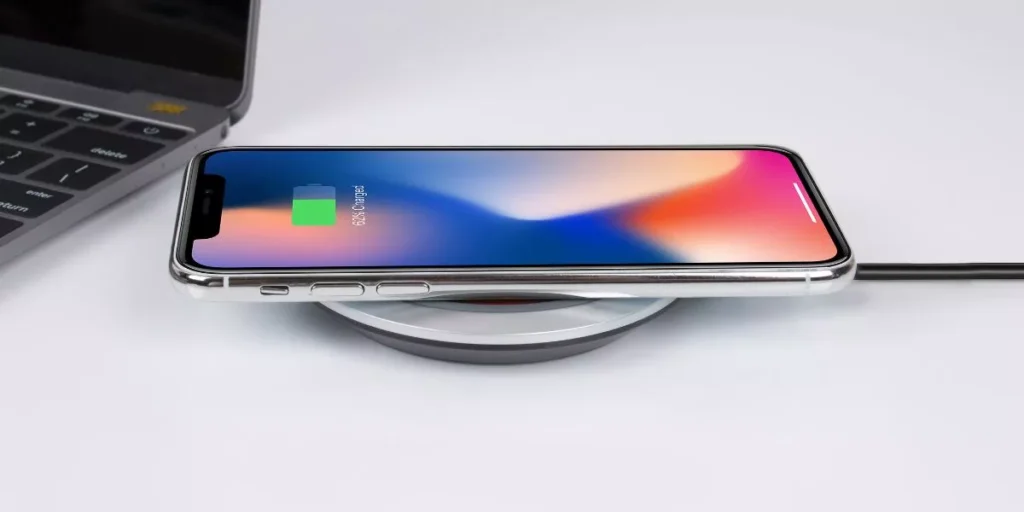
Have you ever wondered about the magic behind wireless charging on your smartphone? You might be surprised to learn that it involves the fascinating world of electromagnetic fields. By simply placing your device on a charging pad, you initiate a process that seems almost futuristic. But how exactly does your phone manage to charge without any physical connections? Stay tuned to uncover the intricacies of this innovative technology and gain a deeper understanding of how your smartphone harnesses the power of invisible forces to stay charged up.
Wireless Charging Basics
If you’ve ever wondered how wireless charging actually works on your smartphone, here’s a straightforward explanation. Wireless charging, also known as inductive charging, allows you to charge your device without plugging in any cables. This technology relies on electromagnetic fields to transfer energy from the charging mat or pad to your device.
When you place your smartphone on a wireless charger, the charger generates an alternating current through an induction coil. This current creates an oscillating magnetic field around the coil. Your smartphone then converts this magnetic field back into an electric current using its own induction coil. This current is used to charge the battery of your device.
One key advantage of wireless charging is convenience. You can simply place your phone on a charging pad without the hassle of dealing with tangled cables. As technology continues to improve, wireless charging is becoming more efficient and widespread, making it a convenient option for keeping your devices powered up.
Inductive Charging Process
When your smartphone is placed on a wireless charger, the inductive charging process begins by generating an alternating current through an induction coil. This coil is present in both the charger and the device, forming a magnetic field when electricity flows through it. The alternating current in the charger’s coil creates a changing magnetic field, which induces a voltage in the coil inside the smartphone. This voltage is then converted into direct current to charge the battery.
The inductive charging process relies on electromagnetic fields to transfer energy between the charger and the device. The distance between the coils affects the efficiency of this energy transfer, with closer proximity resulting in better charging speeds. The technology behind inductive charging allows for a convenient way to power up your device without the need for physical connectors. As more smartphones integrate this feature, the ease of wireless charging continues to enhance the user experience.
Qi Technology Explained
Exploring how Qi technology facilitates wireless charging on smartphones brings a deeper understanding of this innovative method. Qi technology is a standardized form of wireless charging developed by the Wireless Power Consortium. It operates on the principle of electromagnetic induction, where an electromagnetic field transfers energy between two objects.
In the case of smartphones, the device needing a charge and the charging pad communicate through Qi technology. The charging pad generates an electromagnetic field that induces an electric current in the coil inside the smartphone. This current is then converted into direct current (DC) to charge the phone’s battery.
Qi technology ensures compatibility among various devices that support this standard, allowing for seamless charging experiences without the hassle of different charging cables. By incorporating Qi technology, smartphone manufacturers have made it convenient for users to charge their devices wirelessly, promoting a clutter-free and efficient charging solution.
Benefits of Wireless Charging
Discover how wireless charging enhances your smartphone experience with its array of convenient benefits. Say goodbye to tangled cords and fumbling with connectors.
Wireless charging offers you the simplicity of just placing your device on a charging pad or stand without the hassle of plugging and unplugging. This not only saves you time but also reduces wear and tear on your charging port, ultimately prolonging the lifespan of your smartphone.
Furthermore, wireless charging promotes a clutter-free environment. By eliminating multiple charging cables, you can keep your space organized and visually appealing. Imagine having a clean desk or nightstand without the mess of tangled cords.
Additionally, wireless charging pads can double as stands, allowing you to easily view notifications or watch videos while your phone charges.
Moreover, wireless charging is incredibly convenient. You can top up your device’s battery whenever needed, without searching for a cable. Whether at home, in the office, or on the go, wireless charging provides a seamless and hassle-free charging experience that simplifies your daily routine.
Tech products














